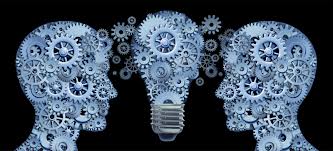Today’s global business environment requires leaders to navigate geographical and cultural differences that team members and constituents bring to the business. Perhaps it’s remote employees based in China, India, or the Philippines. Maybe it’s the sales relationship with customers in different regions of the country. It might be the vendor in Mexico that produces a critical component of your product line. Great leaders have the interpersonal agility to consider, appreciate, and understand the cultural differences that others bring to the business and then inspire shared operating norms that enable the entire organization and value chain to be successful.
The challenge is that geographical and cultural differences often trigger negative reactions and filters in people that have the potential to close down dialogue and idea generation.
This almost happened to me on a recent consulting engagement. I was scheduled to facilitate a team-building workshop with a manufacturing team from Denver and the Pacific Northwest. I had worked previously with other groups from the company and felt comfortable and confident about the opportunity. The night before the session, I was invited to an informal team dinner. As I walked through the doors from the hotel lobby onto the adjacent patio, I noticed three round tables, each occupied by large men sporting tank tops, tattoos, and baseball caps. I was just about to turn around from what appeared to be a Hell’s Angels biker reunion when my point of contact stood up and briskly make an introduction. 13 reluctant men silently starred at me just waiting to evaluate my reaction. I walked around, made about an hour of small-talk, and then ventured back to my hotel room.
That night I spoke to my wife and described the storm I was about to walk into the next day. She simply replied, “That sounds like fun.” I reflected on her comment after our call and realized that I needed to set aside my preconceived notions about what was going to happen.
The following day resulted in the most engaging and fulfilling team training session I have been part of. These rough and tumble men turned out to be the most genuine and authentic group of people I have ever met in my entire life. Beyond the burly appearances were creative, caring, humble, and intelligent people. They engaged in vulnerable and honest discussion that make most leadership teams pale in comparison. By the end of our session, I was convinced I could work with any of them and know that they would have my back.
It’s easy for leaders to let their own biases and outdated stereotypes get in the way of productive, innovative, and brilliant ideas that might be available otherwise. The best leaders, however, realize that they indeed have biases. They don’t deny this fact in an effort to appear politically correct. What they do differently from other leaders is develop the ability to observe their biases in action, reflect on the impact their biases have on their reactions, and then modify their behavior to bring out the best in themselves and others – for the sake of the business.

